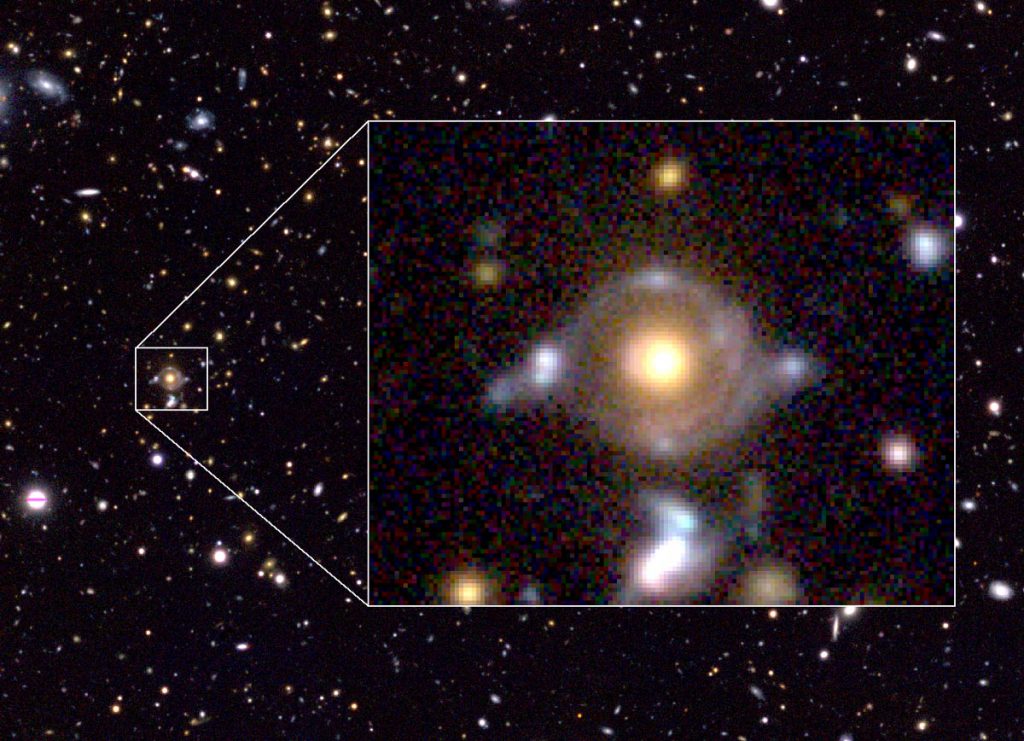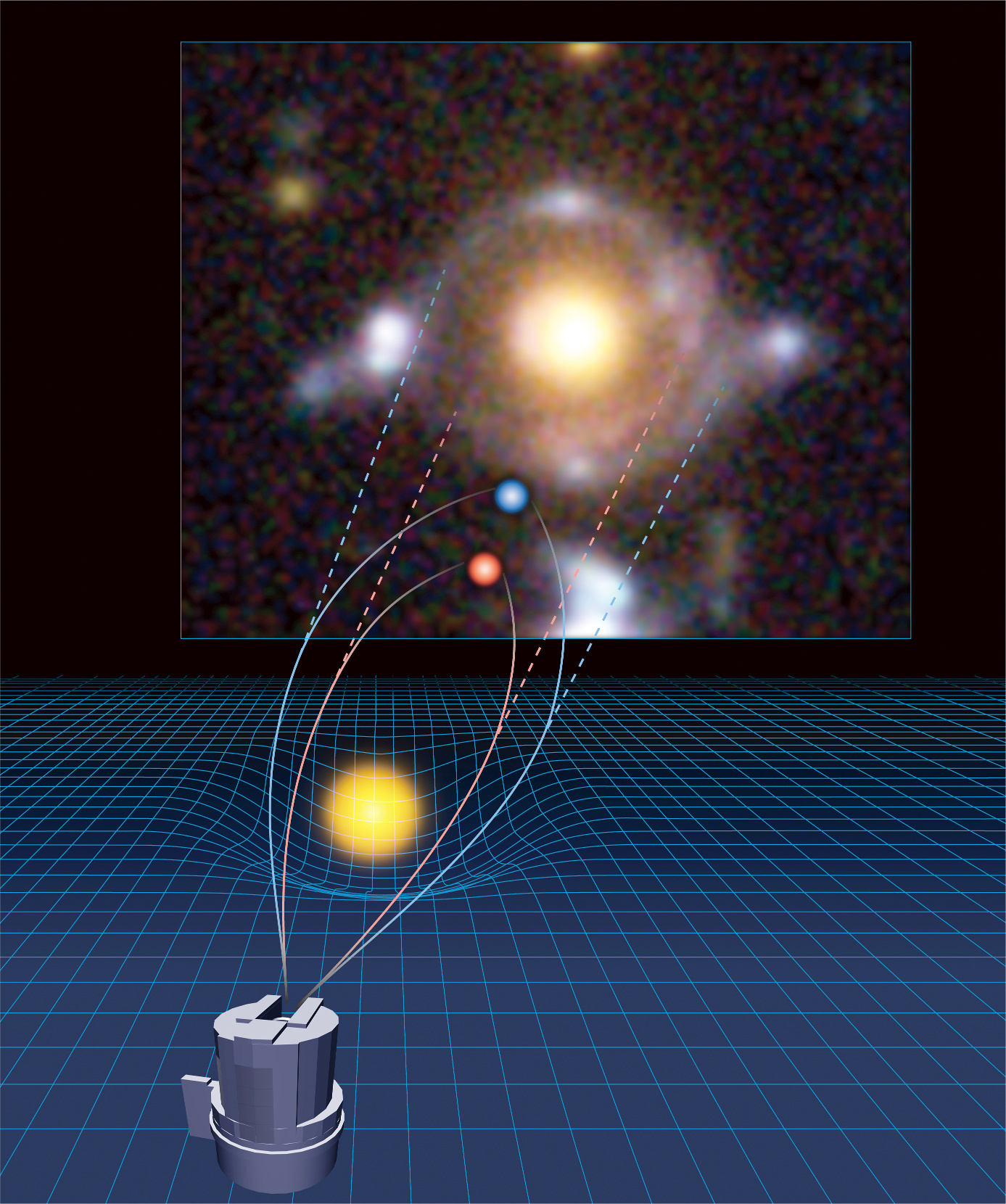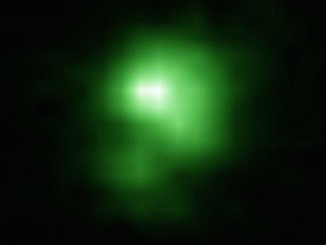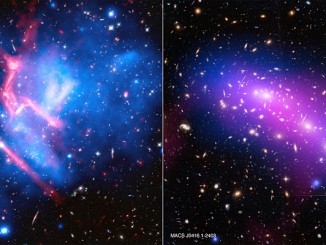Light from a distant galaxy can be strongly bent by the gravitational influence of a foreground galaxy. That effect is called strong gravitational lensing. Normally, a single galaxy is lensed at a time. The same foreground galaxy can — in theory — simultaneously lens multiple background galaxies. Although extremely rare, such a lens system offers a unique opportunity to probe the fundamental physics of galaxies and add to our understanding of cosmology. One such lens system has recently been discovered and the discovery was made not in an astronomer’s office, but in a classroom. It has been dubbed The Eye of Horus, and this ancient eye in the sky will help us understand the history of the universe.

Subaru Telescope organises a school for undergraduate students each year. One such session was held in September 2015 at the National Astronomical Observatory of Japan (NAOJ) headquarters in Mitaka, Tokyo. Subaru is currently undertaking a massive survey to image a large area of the sky at an unprecedented depth with Hyper Suprime-Cam as part of Subaru Strategic Program. A group of astronomers and young students were analysing some of that Hyper Suprime-Cam data at the school when they found a unique lens system. It was a classic case of a serendipitous discovery.
“When I was looking at HSC images with the students, we came across a ring-like galaxy and we immediately recognised it as a strong-lensing signature,” said Masayuki Tanaka, the lead author of a science paper on the system’s discovery. “The discovery would not have been possible without the large survey data to find such a rare object, as well as the deep, high quality images to detect light from distant objects.”
A close inspection of the images revealed two distinct arcs/rings of light with different colours. This strongly suggested that two distinct background galaxies are being lensed by the foreground galaxy. The lensing galaxy has a spectroscopic redshift of z = 0.79 (which means it’s 7.0 billion light-years away) based on data from the Sloan Digital Sky Survey. Follow-up spectroscopic observations of the lensed objects using the infrared-sensitive FIRE spectrometer on the Magellan Telescope confirmed that there are actually two galaxies behind the lens. One lies at z = 1.30 and the other is at z = 1.99 (9.0 and 10.5 billion light-years away, respectively).

The distinct features for the system (several bright knots, an arc, a complete Einstein ring) arise from the nice alignment of the central lens galaxy and both sources, creating an eye-like structure. The astronomers dubbed it Eye of Horus, for the sacred eye of an ancient Egyptian goddess, since the system has an uncanny resemblance to it.
The survey with Hyper Suprime-Cam is only 30 percent complete and it will collect data for several more years. Astronomers expect to find roughly ten more such systems in the survey, which will provide important insights into the fundamental physics of galaxies as well as how the universe expanded over the last several billion years.



